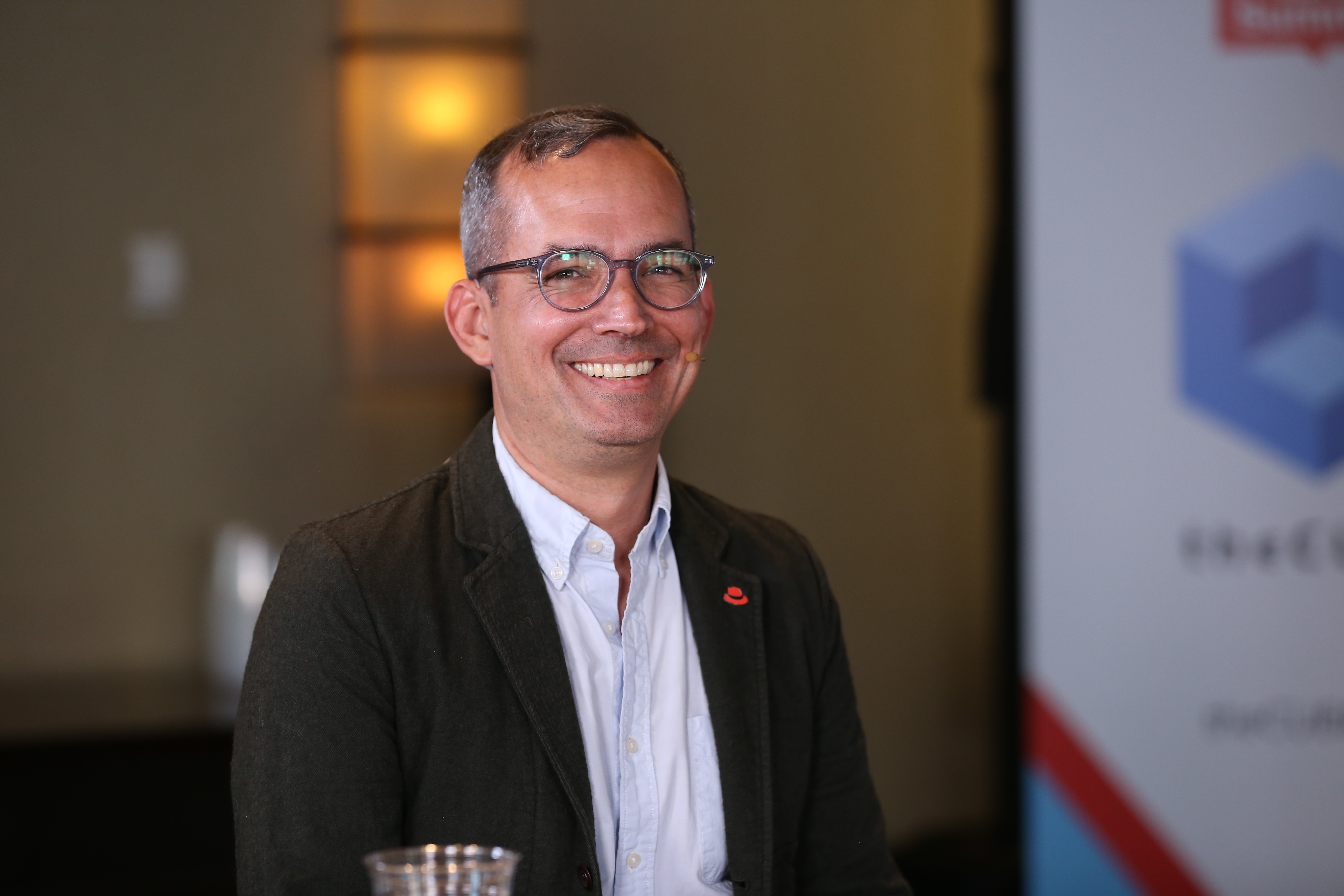 INFRA
INFRA
 INFRA
INFRA
 INFRA
INFRA
The new Red Hat Enterprise Linux, released during the recent Red Hat Summit, caters to rapidly escalating hardware development occurring throughout tech, along with a growing Linux admin skills shortage.
RHEL 9 performs the combo double act, in part, by more efficiently optimizing the operating system, according to Gunnar Hellekson (pictured), general manager of the Enterprise Linux Business Unit at Red Hat Inc. Upgrading to the new OS means enterprises can get by with fewer admins. A skills shortage is caused, in part, by a lack of U.S. visas.
“I need to figure out a more efficient way of running my Linux operation; I can’t solve this by throwing bodies at it,” Hellekson explained, speaking with theCUBE industry analysts Dave Vellante and Paul Gillin at Red Hat Summit during an exclusive broadcast on theCUBE, SiliconANGLE Media’s livestreaming studio. They discussed business issues and a new, formal support for additional hardware, notably ARM servers. (* Disclosure below.)
Organizations are now aggressively looking for operating system consistency, which has become an emerging requirement as the enterprise flits around from on-premises to cloud to edge, along with the need to optimize workers.
“They can make the most of the Linux talent that they do have,” Hellekson said, referring to the use of newer OS’s that incorporate automation tools and other efficiencies.
Hellekson furthered: “If I have to juggle three, four different operating systems, that doesn’t make any sense, because the thing most precious to me is my Linux talent.”
In additions to the admins, catering to those working on projects as application developers is also front of mind. Consistency throughout all of the infrastructures, yet still pandering to features unique to certain chips, such ARM’s, or a particular cloud provider is key, Hellekson stated.
“We’re trying to deliver a uniform platform experience to the application developers,” he said. “The point of RHEL is to be the same so that everything else can be different.”
Here’s the complete video interview, part of SiliconANGLE’s and theCUBE’s coverage of the Red Hat Summit event:
(* Disclosure: TheCUBE is a paid media partner for Red Hat Summit. Neither Red Hat Inc., the sponsor for theCUBE’s event coverage, nor other sponsors have editorial control over content on theCUBE or SiliconANGLE.)
Support our mission to keep content open and free by engaging with theCUBE community. Join theCUBE’s Alumni Trust Network, where technology leaders connect, share intelligence and create opportunities.
Founded by tech visionaries John Furrier and Dave Vellante, SiliconANGLE Media has built a dynamic ecosystem of industry-leading digital media brands that reach 15+ million elite tech professionals. Our new proprietary theCUBE AI Video Cloud is breaking ground in audience interaction, leveraging theCUBEai.com neural network to help technology companies make data-driven decisions and stay at the forefront of industry conversations.